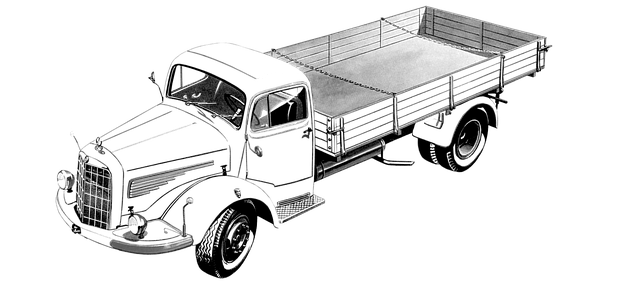Managing a truck's battery is essential for its performance and reliability on the road. Truck batteries are specifically designed to handle the vehicle's heavy-duty electrical needs, including additional features like lighting, winches, and heavy-duty accessories. When choosing a battery, it's important to select an AGM or EFB type, available in 12 or 9 volts, with the right cold cranking amps (CCA) for your truck's make, model, and climate. Routine maintenance includes cleaning terminals, securing hold-down clamps, and monitoring battery levels to ensure longevity. Signs of a failing battery include reduced cranking power on cold mornings or dashboard warning lights. A multimeter can help determine if it's time for a new battery, typically recommended every three years or according to the manufacturer's guidelines. Safety is paramount when replacing a truck battery; follow the owner's manual instructions, use proper tools, and ensure the vehicle is in a safe location away from ignition sources. Always check that the new battery fits your truck's specifications, particularly its CCA, reserve capacity (RC), and ampere hours (Ah). Regular maintenance, such as cleaning terminals and topping off lead-acid batteries with water, can significantly extend battery life. In colder regions, consider using a battery warmer to prevent low-temperature issues. Avoid overcharging and deep discharges to preserve your truck's battery capacity, ensuring it remains a reliable power source for all your trucking needs. Remember the importance of proper disposal and recycling of old batteries to minimize environmental impact.
When it comes to maintaining your truck, understanding and replacing your truck battery is a fundamental skill that ensures reliability on the road. This beginner’s guide demystifies the process of truck battery replacement, from identifying signs it’s time for a new one to selecting the appropriate battery type and specifications for your vehicle. We’ll walk you through safe removal of the old battery, guide you in finding the perfect match for your truck, and provide essential maintenance tips to keep your new battery running strong. Let’s get rolling on how to handle your truck’s power source with confidence and ease.
- Understanding Your Truck's Battery System: The Basics for Beginners
- Identifying When It's Time to Replace Your Truck Battery
- Steps to Safely Remove the Old Battery from Your Truck
- Selecting the Right Battery Type and Specifications for Your Truck
- Installation Guide: A Step-by-Step Process for Replacing a Truck Battery
- Maintenance Tips to Prolong Your New Truck Battery's Lifespan
Understanding Your Truck's Battery System: The Basics for Beginners

When addressing your truck’s battery system, it’s crucial for beginners to grasp the fundamentals that govern these components. A truck’s battery serves as the power source for starting the engine and providing electrical energy to various electrical systems within the vehicle. Unlike passenger cars, many trucks are equipped with dual batteries or a larger single battery to accommodate their more demanding electrical needs, including additional lighting, winches, and other heavy-duty accessories. Understanding your truck’s battery type is essential, as most modern trucks use absorbent glass mat (AGM) or enhanced flooded batter (EFB) technologies. These batteries are designed to handle the rigorous demands of a truck’s electrical system.
Truck batteries typically come in two voltages: standard 12 volts and heavy-duty 9 volts, with the latter being capable of delivering more cold cranking amps (CCA) for starting diesel engines in colder climates. As a beginner, it’s important to familiarize yourself with your truck’s make and model to determine the correct battery size and type. This information can be found in your vehicle’s owner’s manual or by consulting with a professional. Regular maintenance, such as cleaning corroded terminals, checking the battery level monthly, and ensuring a secure hold-down clamp, will contribute to the longevity and reliability of your truck’s battery. When it’s time for a replacement, look for a battery that matches or exceeds the specifications of your original, ensuring compatibility with your truck’s electrical system for optimal performance.
Identifying When It's Time to Replace Your Truck Battery

When your truck’s battery begins to show signs of diminished performance, proactive maintenance can prevent unexpected issues on the road. A key indicator that it’s time to consider a truck battery replacement is when the engine cranks sluggishly or fails to start, especially on cold mornings. This decrease in cranking power is often the first hint that the battery’s charge capacity is waning. Additionally, persistent warning lights on the dashboard, such as the battery light or check engine light, can signal internal issues within the battery. Regular checks of the battery voltage and charge level through a multimeter can help monitor the battery’s health. If the voltage reads below 12.4 volts while the vehicle is off, or if it drops significantly during a test with the headlights on, it may be an opportune time to replace the battery. Furthermore, if your truck’s battery is more than three years old or has reached its manufacturers’ recommended replacement cycle, it’s advisable to replace it. Regularly inspecting the battery case and terminals for corrosion, swelling, or cracks can also inform your decision, as these are clear signs that the battery is nearing the end of its serviceable life. Ensuring the battery is securely mounted and free from any physical damage will not only optimize its performance but also extend its lifespan. Keeping track of these factors will help you make an informed decision on when to replace your truck’s battery, ensuring safety and reliability for your journeys.
Steps to Safely Remove the Old Battery from Your Truck

When the time comes to replace your truck’s battery, safety and precision are paramount. Begin by gathering all necessary tools and protective gear, including a set of wrenches, gloves, and safety glasses. Before you disconnect anything, make sure to consult your truck’s owner manual for specific instructions related to its electrical system. Once you have the manual guidelines in hand, start by safely shutting down your vehicle and ensuring it is parked on a level, stable surface away from any potential sources of ignition.
To safely remove the old battery, first, locate the battery in your truck, which is usually found in the engine compartment. Note its position to avoid confusion during installation of the new battery. Next, identify and disconnect the negative (-) terminal first, using a wrench to loosen the nut that secures it to the battery post. Carefully remove the cable and place it aside, ensuring the terminals do not touch each other or any metal parts, as this could cause a short circuit. Repeat this process for the positive (+) terminal. With the cables disconnected, the battery itself can now be removed. Lift the battery out carefully, taking note of how it was positioned and secured in its tray, as you will want to replicate this orientation when installing the new battery. Once the old battery is out, you are ready to proceed with the installation of the new one, ensuring that it is fully charged and has a good seal to prevent leaks. Always handle the new battery with care, as it contains hazardous materials and should be disposed of properly at a recycling center when it reaches the end of its lifespan.
Selecting the Right Battery Type and Specifications for Your Truck

When selecting a new battery for your truck, it’s crucial to consider the right type and specifications that align with your vehicle’s make, model, and intended use. Truck batteries come in various types, including standard lead-acid, absorbed glass mat (AGM), and lithium-ion, each with its own advantages and ideal applications. For instance, AGM batteries are a popular choice for trucks due to their vibration resistance and long service life, making them suitable for the often-demanding conditions of heavy-duty vehicles. To ensure compatibility, consult your truck’s manual or an expert to ascertain the correct battery size, cold cranking amps (CCA), reserve capacity (RC), and ampere hours (Ah) your vehicle requires. The CCA rating is particularly important as it indicates the battery’s performance in cold temperatures, ensuring your truck starts reliably even in harsh winter conditions. Additionally, the reserve capacity gives an idea of how long auxiliary systems can run if the engine isn’t starting, which is essential for trucks that frequently use additional electrical components or accessories. It’s also wise to factor in the battery’s group size and terminal type, ensuring they match your truck’s battery tray and electrical system for a secure and proper fit. By carefully selecting the right truck battery based on these specifications, you can rest assured that your vehicle will have the power it needs for both routine operation and those unexpected demands.
Installation Guide: A Step-by-Step Process for Replacing a Truck Battery

Maintenance Tips to Prolong Your New Truck Battery's Lifespan

Regular maintenance is key to extending the life of your truck’s battery. To ensure your new truck battery serves you well for years, consider the following tips. Firstly, always disconnect the battery when performing electrical work on your truck to prevent any risk of short-circuiting that could damage the battery. Keep the battery terminals clean and tight; corrosion can form over time, so use a wire brush to clean them, and apply a coat of dielectric grease to protect against future corrosion. Regularly check the water levels in your truck’s battery if it’s a traditional lead-acid model, as maintaining proper electrolyte concentration is crucial for its performance and longevity. In colder climates, consider investing in a battery warmer to prevent the battery from discharging due to the low temperatures, which can shorten its lifespan. Additionally, avoid charging your truck’s battery at an excessively high rate as this can degrade the battery’s capacity over time. Lastly, be mindful of the loading on the battery; repeatedly drawing down the battery significantly can reduce its total life, so plan your trips and usage to avoid overworking it. By following these maintenance tips, you can ensure that your truck’s battery remains reliable for a long time.
When maintaining your truck, ensuring your battery functions optimally is paramount. This beginner’s guide has demystified the process of truck battery replacement, from recognizing signs of a failing battery to selecting an appropriate replacement. By following the outlined steps for safe removal and installation, you can confidently swap out your old battery with a new one that suits your vehicle’s specifications. Remember, regular maintenance as suggested can help extend the life of your new truck battery, keeping your vehicle reliable on the road. For those new to this task, take the time to understand your truck’s battery system and adhere to the guidelines provided for a successful replacement. With these tools at your disposal, you’re well-equipped to handle future battery needs with ease.



